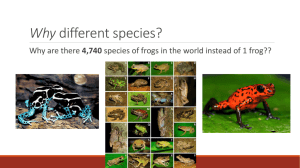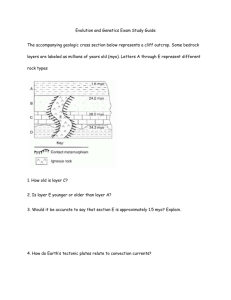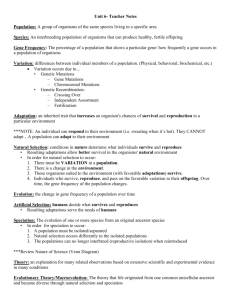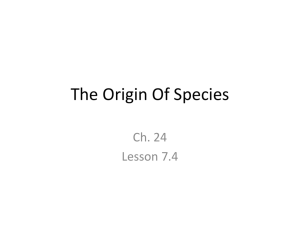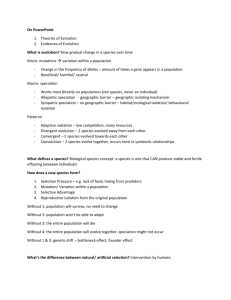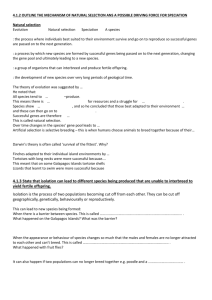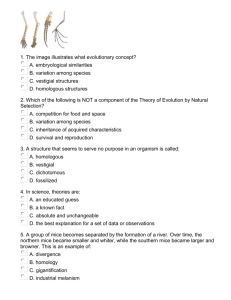Lesson 8 Speciation student copy
advertisement
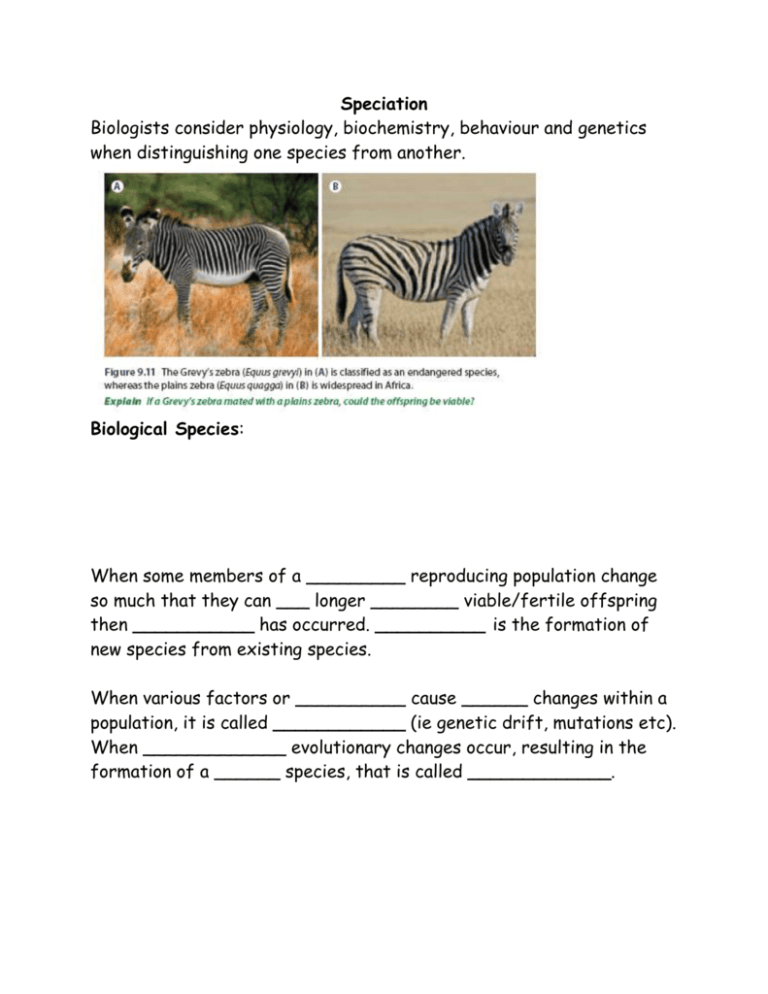
Speciation Biologists consider physiology, biochemistry, behaviour and genetics when distinguishing one species from another. Biological Species: When some members of a _________ reproducing population change so much that they can ___ longer ________ viable/fertile offspring then ___________ has occurred. __________ is the formation of new species from existing species. When various factors or __________ cause ______ changes within a population, it is called ____________ (ie genetic drift, mutations etc). When _____________ evolutionary changes occur, resulting in the formation of a ______ species, that is called _____________. Two populations can become _____________ isolated over time if there is little to no gene flow between them. Two types of reproductive isolating mechanisms that prevent gene flow are _____________ and ________________. Types of Speciation Sympatric Speciation Factors such as chromosomal changes (in plants) and non-random mating (in animals) alter gene flow. This type of speciation is far more common in plants. A new species can be ____________ in a ________ generation if a _________ change results in a _____________ barrier between the offspring and parent population. (ie mutations in DNA -deletion or addition of DNA). _____________ results from ________ in ________ where the offspring has _____ sets of chromosomes. Large numbers of plants can result in this condition since plants can self pollinate. Two species can _________ to produce a _________ offspring but the offspring can reproduce asexually resulting in the formation of a separate population. If an error occurs in meiosis of this new population then the sterile hybrids can be transformed into fertile individuals. IE. Wheat is a hybrid of two grasses. Allopatric Speciation Occurs when a ___________ is ______ into ____ or more ________ groups by a __________ barrier. Eventually the ___________ of the split population becomes so _______ that the two groups are ______ to _________ even if they were brought back together. Geographic barriers include: Once populations are isolated gene frequencies begin to diverge due to natural selection, mutation, genetic drift or gene flow. Darwin’s _________ are an example of _________________ and __________ _____________. Adaptive radiation is a type of allopatric speciation in which the original species is diversified into a variety of differently adapted species. When finches arrived on the Galapagos Islands they were the only _____ ______ on the islands and therefore had many ecological niches to move into and adopt. Individual finches were subjected to __________ selective pressures and as a result over time the species _______ into _________ populations and some into ____ species altogether. Consequences of Human Activities on Speciation We may be preventing gene flow causing the bottleneck effect/extinction Develop wilderness areas for recreation and tourism Urban subdivisions Flood large areas of land to build dams for hydroelectric power
